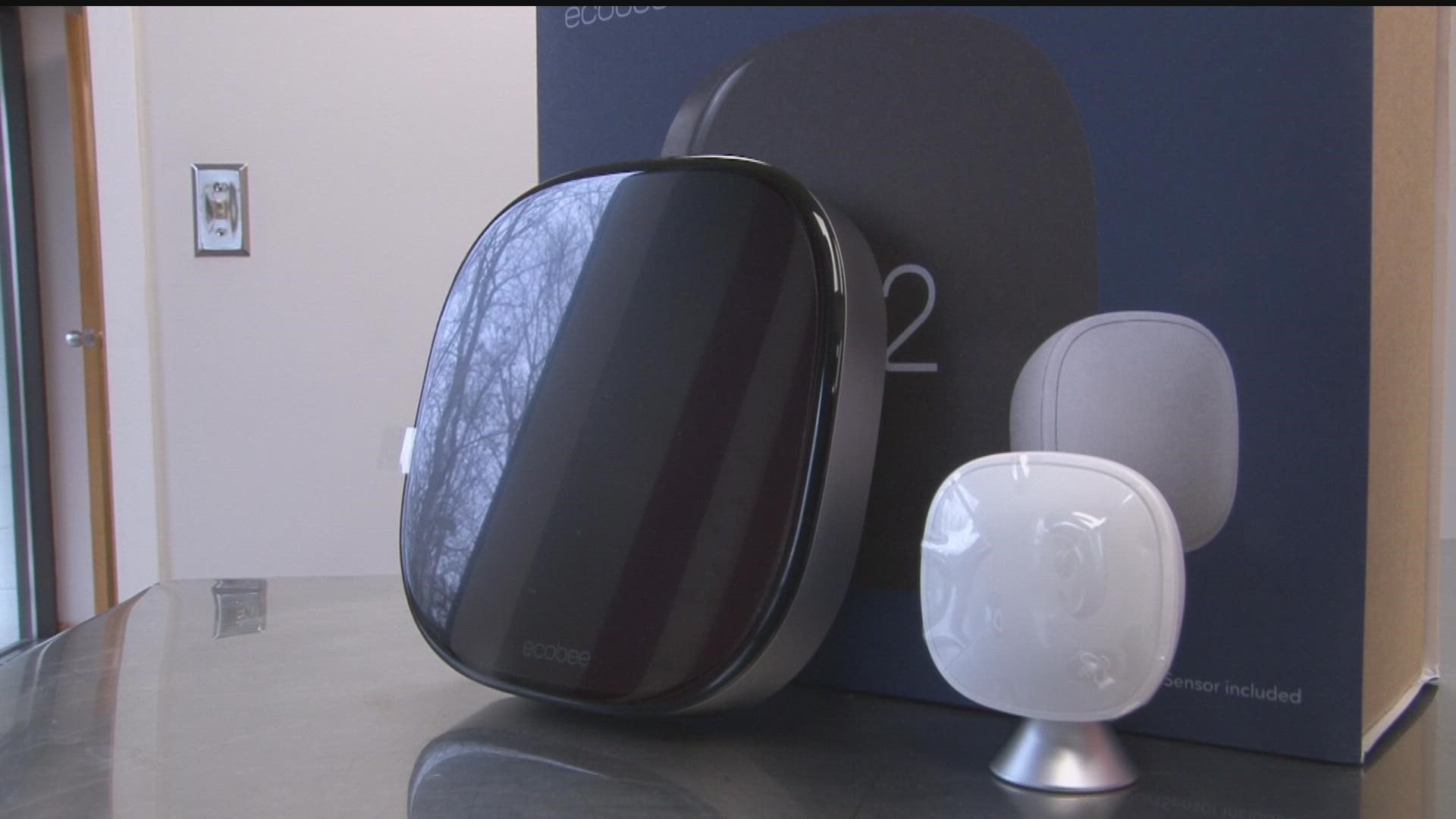MEDINA, Minn. — Cold weather is settling in and with high natural gas prices, heating your home is going to cost about 18% more this year. So you don’t want to unnecessarily heat your house, and one of the best ways to avoid that is by using a smart thermostat.
“It learns your house, and it learns your activities and it manipulates the heating and cooling accordingly,” said Tim Underhill, the sales manager at Ditter Cooling and Heating.
A smart thermostat does all of that through Wifi and most are compatible with any furnace, regardless of make, model or year built.
Operations Manager David Whemhoff says the constant communication with the heating and cooling systems will save money. “Installing and proper setup of these thermostats can net at least 26% energy savings,” he said.
It costs roughly $2,000 a year to heat and cool the average home in Minnesota, so 26% can come out to over $500 in savings.
Of course, there’s an initial cost. Basic start thermostats, including installation, are priced between $300-$450. A model that's top of the line, where Whemhoff says systems offer more features, will set you back around $1,000 dollars. For people who head south for the winter, Whemhoff points out that a smart thermostat gives homeowners the peace of mind to check on their home back in Minnesota.
Then there’s the comfort factor. A big feature of smart thermostats is being able to evenly heat the house. On many models, sensors are placed in rooms around the home which wirelessly connect to the thermostat. This insures the home is heated to the correct temperature throughout.
Underhill also points out a lot of the smart thermostats communicate with technology like Alexa, Google Home, and other monitoring devices. “A lot of them have their own security devices, cameras, motion sensors, door alarms that you can incorporate using just the one app,” he said.
If you are thinking of installing a new thermostat, utility companies like CenterPoint and Xcel Energy are encouraging energy reduction and are incentivizing smart thermostat installation through rebate programs.
There are other ways to save on energy without dropping hundreds of dollars. First, look at your washer and dryer habits. The average family uses both the washing machine and dryer for six hours a week, which can account for 5 to 10% of your energy bill.
So, instead of using hot water to wash, just use cold. According to Energy Star, the switch could save you $66 a year. While you're at it, dial the temperature down on the dryer. Going low saves energy, plus it's gentle on fabrics, making your clothes last longer.
Watch more KARE11 Sunrise:
Watch the latest coverage from the KARE11 Sunrise in our YouTube playlist:

